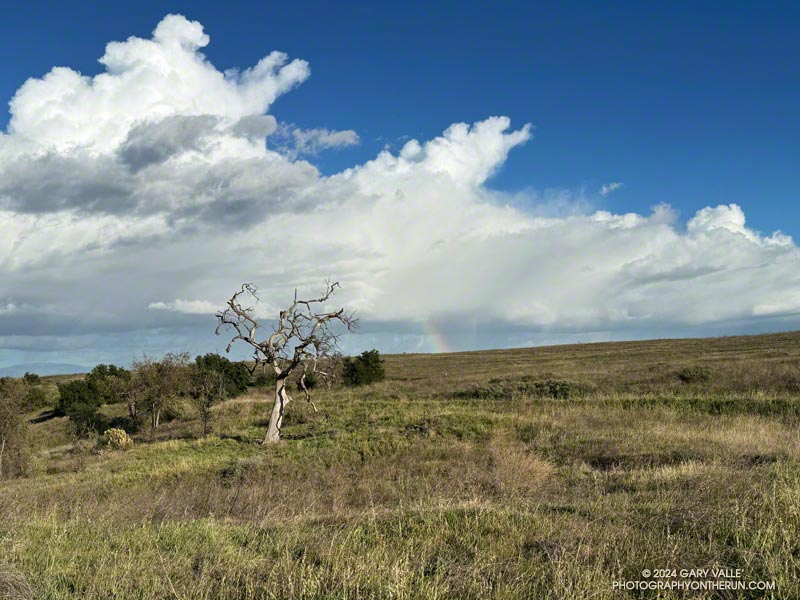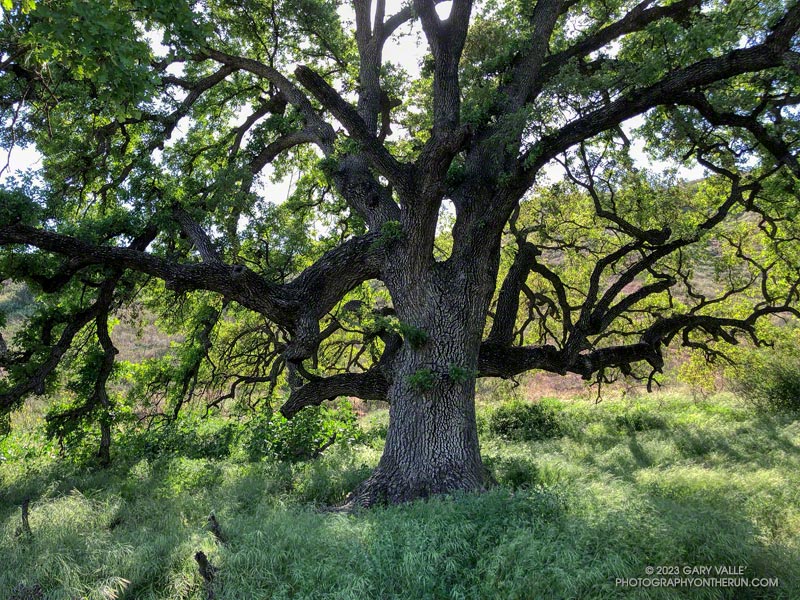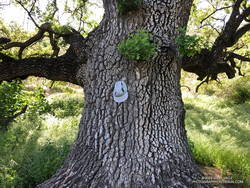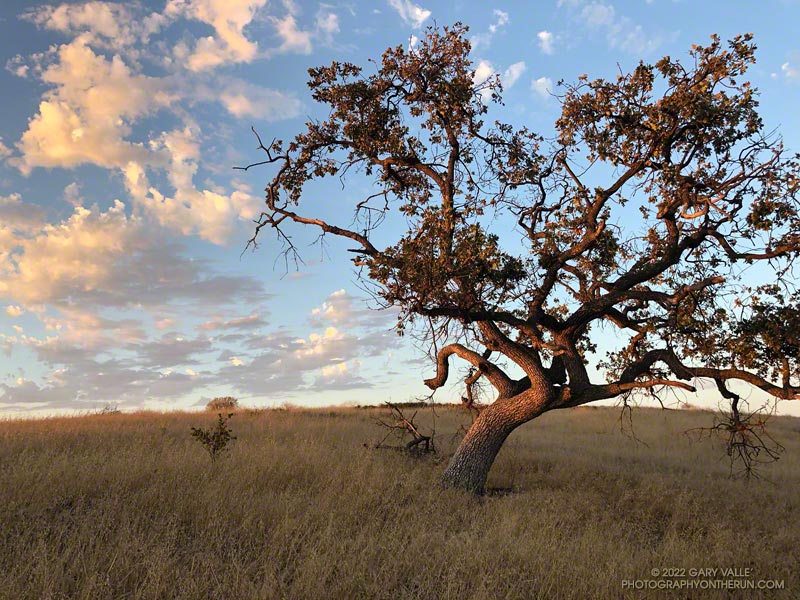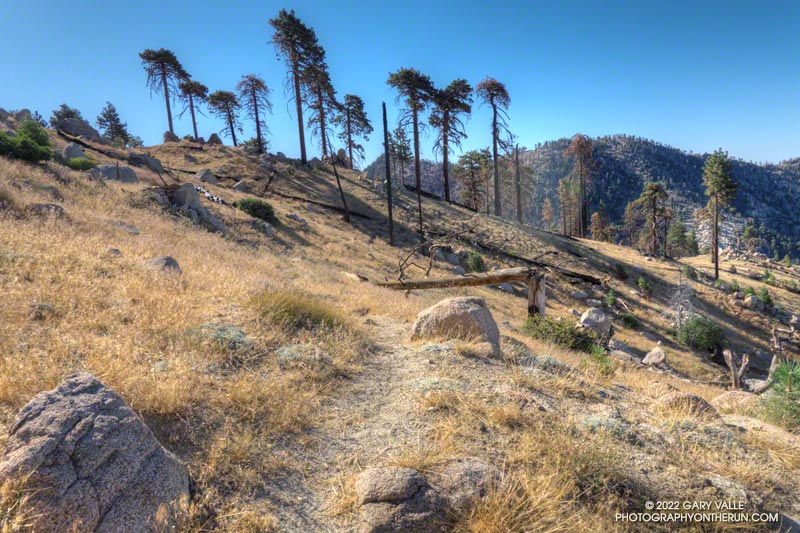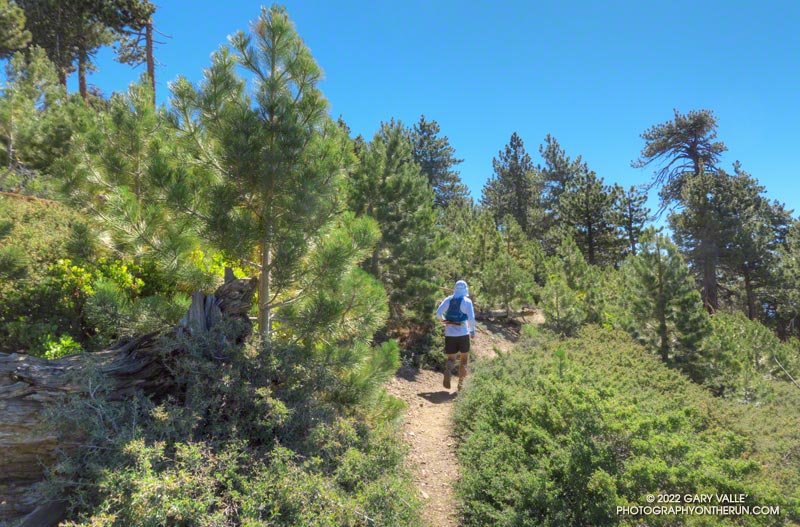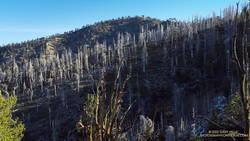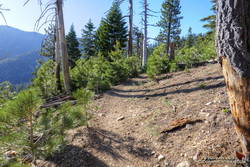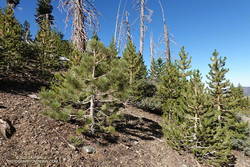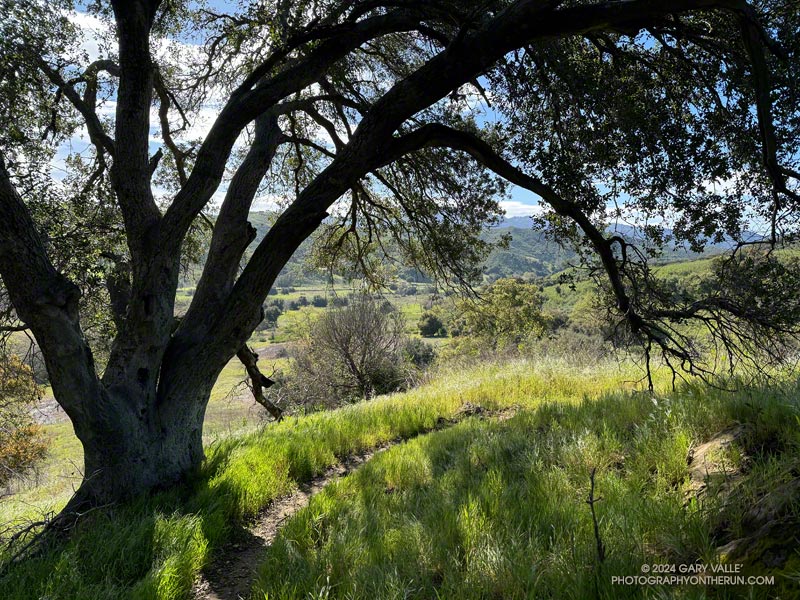
One of the e-mountain bikers commented, “That’s a lot of water!”
The three of us had arrived at the bank of Malibu Creek at the same time. There was a lot of water. The crossing must have been a real monster during some of this year’s storms, but this morning the creek was slow-moving and maybe 30-40 yards across. The main concern getting across would be slipping on the algae-covered rocks along the bottom and taking an unintended bath. I waded in.
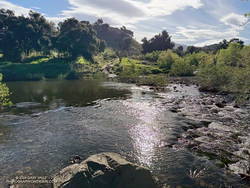
How did I find myself wading across Malibu Creek on this brisk March morning? I was doing a convoluted variation of the Phantom Loop, enjoying the Spring scenery, and going where the trails and terrain took me.
What is the Phantom loop? For me, it’s any loop that starts at the Cistern Trailhead on Mulholland Highway and ends at the Phantom Trailhead on the other side of the highway. Or vice versa. And since it’s a loop, it could start/end at any trailhead on or near the loop.
There are many ways to complete this loop. Here’s an interactive 3D-terrain view of the shortest version I’ve done (7.3 miles), and here is a longer variation (24 miles).
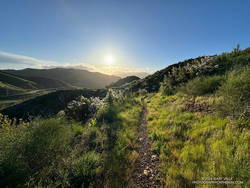
My run started on the Cistern Trail shortly after dawn. I’d run through Reagan Ranch and then up the Lake Vista Trail to the overlook for an early morning view of Malibou Lake. From the overlook, I’d continued east on the Lake Vista and Deer Leg Trails, enjoying the blooms of the Ceanothus, Hummingbird Sage, and bush poppy along the way.
Just before the Deer Leg Trail descends from the crest, I stopped at another overlook to take in Malibu Creek’s stunning terrain. From the viewpoint, I could see the coast redwoods along Century Lake. A few of the tall trees survived the 2011-205 drought and the 2018 Woolsey Fire, including one young naturally germinated tree. Now we’re in a rare wet cycle. The past two years are among the wettest on record for Los Angeles — good news for the remaining trees!
From the overlook of Malibu Creek, I ran down to the Yearling Trail, turned right (east), and in about a hundred yards was at the top of the Cage Creek Trail. I followed this short trail down to Crags Road and Malibu Creek.
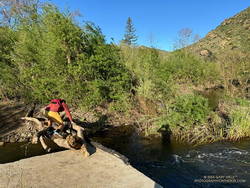
I thought there was a chance the seasonal bridge on the way to the M*A*S*H site might have already been reinstalled. It hadn’t, but a pile of limbs and logs spanned the gap across the creek.
From the matchstick bridge, I turned around and ran east on Crags Road, past the Cage Creek Trail and Century Lake, and then down the road to the junction of High Road and Crags Road.
When doing the Phantom Loop, I usually continue east under the oaks on High Road to the Grassland Trail. But this morning, in keeping with today’s theme, I headed across the bridge — in the direction of the Visitor Center — and looked for a sign marking the start of the Chaparral Trail.
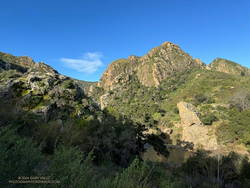
Only about a half-mile long, this obscure trail starts about 60-70 yards northeast of the Visitor Center and links to Mott Road/Century Mtwy, near Crags Road. It has unique views of Planet of the Apes Wall, Malibu Creek, and Goat Buttes. When I reached the trail’s end, I turned left on the road and followed it to the flooded crossing on Crags Road.
Wading into a stream is always a bit awkward. I decided to follow a rocky shoal where the water was about calf deep. As expected, the rocks were rounded and slimy. I didn’t have poles and the footing wasn’t the best, but I managed to get across without incident.
In a few steps, I was headed east and back on the route of the “standard” Phantom Loop. In about a tenth of a mile, I forked left off the main road and onto the Grasslands Trail.
I’m always surprised how quickly the squishiness of wet running shoes and socks goes away. (Today, I was running in Hoka Challenger ATR 7s with Injinji socks.) By the time I reached Mulholland Highway, my shoes and socks had air-dried and felt more or less normal. Crossing Mulholland Highway, I walked east a few yards and continued north on the North Grasslands Trail to the Liberty Canyon Trail.
I hadn’t run far in Liberty Canyon when I came to the Talepop Trail. It had been a long time since I had done the Talepop – Grasslands (Las Virgenes Fire Road) Loop. The hills were green, the sun shining, and the temperature perfect for running. What better time than now to get on it again? With the cool conditions, I had plenty of water to do the extra three to four miles and wouldn’t have to make a side trip to De Anza Park.
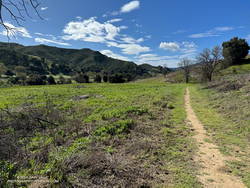
The loop was as pretty as I remembered it. Initially following an undulating ridge, the Talepop Trail eventually winds down to the grassy valley to the east and intersects Las Virgenes Fire Road. A left (north) turn here goes to De Anza Park; a right turn traverses classic oak grassland and leads back to the southern end of the Liberty Canyon Trail.
After completing the Talepop Grasslands loop, the remainder of the run followed the usual route of the Phantom Loop. It continues about 1.5 miles north on the Liberty Canyon Trail, but before reaching the trailhead, it jogs left (west), goes over Liberty Creek, and around to a short trail that connects to the Phantom Trail at a group of eucalyptus trees. My route in this area can be viewed by using our high-resolution, interactive 3D viewer and zooming in on the area near the Liberty Canyon Trailhead.
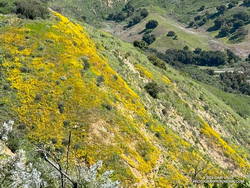
The Phantom Trail goes west up a canyon and then turns south, eventually reaching Mulholland Highway near the Cistern Trailhead. Once out of the canyon, the main trail crosses a use trail several times, so care must be taken to stay on route. The use trail more or less follows the ups and downs on the crest of the ridge, while the main trail switches from one side of the ridge to the other, avoiding unnecessary elevation gains.
The last time I ran this segment of trail — October 2023 — it was VERY overgrown (video). This time, thanks to the work of SMMTC volunteers, nearly all of the trail had been cleared. Many colorful wildflowers were in bloom on this stretch, including Ceanothus, Encelia, Wishbone bush, California poppy, owl’s clover, and paintbrush.
Here are a few photos (and notes) from the trail run, including some of the wildflowers seen along the trail.
Some related posts:
– Bulldog Loop Plus the Phantom Loop
– Redwoods, Raptors, and the Phantom Loop
– Malibu Creek State Park Scenic Loop

